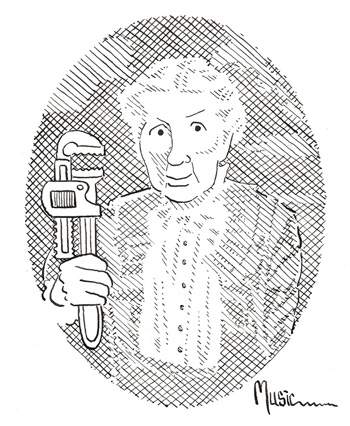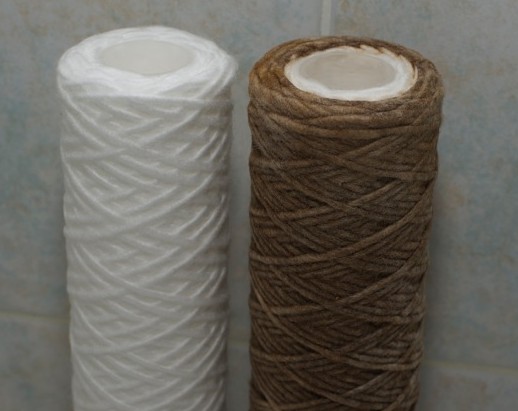Pure Water Annie Explains Sediment Filters
Water filters have many purposes. Some are designed to remove chemicals from water. Others remove metallic contaminants or “dissolved solids” or charged particles.
This article is about filters that remove suspended solids, variously referred to as turbidity, sediment or particulate.
In general terms, filters of this type are sieving devices. They are like nets that catch and hold particles that are too large to pass through the holes in their surface.
There are large backwashing filters that perform this function. They use beds of natural media like sand, garnet, and anthracite to filter out unwanted particles like dirt or iron rust. The newer versions usually rely on specifically designed and manufactured media with brand names like Filter Ag, ChemSorb, or Micro Z to catch particles. When particles are trapped in the bed, the filter “backwashes” by running water backward through the media bed to wash the unwanted particles down the drain.
This article, however, is about cartridge-style filters rather than backwashing filters. Cartridges are for the most part disposable items. Except in rare cases, they are not backwashed. They are used until they stop up, then they are discarded. Certain cartridges can be cleaned and reused, but most are discarded when dirty.
Here is a picture of a sediment filter cartridge that has done its job and has been replaced:
Sediment cartridges are usually made of would string, like those above, of “melt blown” polypropylene, or of thin sheets of polypropylene arranged into accordion-like folds.
They are classified by the size of particles, measured in microns, that they will allow to pass. Common sizes are 1 micron, 5 micron, 20 micron, etc., with the smaller the micron number, the tighter the filter and the smaller the particles it will trap.
There is no “best” material or size when it comes to sediment cartridges. They must often be chosen by trial and error. The tighter the filter, the more it restricts water flow, so small micron sizes aren’t necessarily best.
A look at a closeup of the dirty filter above will demonstrate how hard it is for even tiny particles to pass through.
For more details about sediment filters, see How Sediment Filters Work and Sediment Filters on the Pure Water Occasional’s website.







